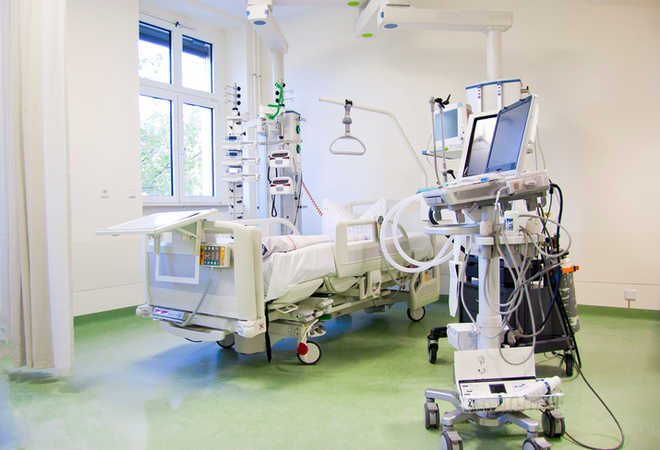
Photo: Thinkstock
Washington DC, May 30
Overnight noise levels in intensive care units (ICU) often exceed levels recommended by the World Health Organisation, according to a recent study.
Guidelines say that ICUs should be just 35 decibels, the hushed tones of a traditional library, but reported sound levels in ICUs are significantly higher with average sound levels always exceeding 45 dBA and for 50 per cent of the time exceeding 52 dBA.
Following complaints from both patients and staff about the noise, researchers from Jessa Ziekenhuis Hospital in Hasselt, Belgium, measured noise levels in one 12-bed intensive care ward.
A sound level meter was placed bedside in a two-bedroom as well as at the nursing station. Measurements were performed after a two week adjustment period to avoid potential bias from people being aware noise was being observed. Sound levels were continuously recorded for 24 hours at each location.
Bedside, average sound levels were 52.8 dBA during the night and 54.6 dBA during the day. A total of 14 sound peaks above 80 dBA were recorded with the highest peak at 101.1 dBA. At the nursing station, average sound levels of 52.6 dBA at night time and 53.9 dBA at day time were recorded. Here, there were 11 peaks above 80 dBA with a maximum sound peak of 90.6 dBA. Those measurements are significantly above the WHO recommendations of 35 dBA average and 40 dBA peaks, but comparable with other ICU recordings.
Equipment noise, alarms, hospital machinery and staff activity could all have contributed to the noise, said the authors. "Since electronic sounds are more arousing than human voices, so it is highly likely that the peaks we measured are alarm activity," explained Dr Eveline Claes.
She added that the sound levels in our ICU clearly exceeded the WHO recommendations but are comparable with sound levels in other ICUs. Those elevated sound levels as well as frequent sound level peaks can be responsible for the subjective feeling of noise pollution experienced by patients, nurses and doctors.
In our department, measures should be taken to reduce the average sound level and the incidence and magnitude of sound level peaks.
However, she noted that it is not easy to create an ICU without noise as we need the alarms to warn us about emergencies. Various programmes of staff education, task scheduling, equipment repositioning and alarm threshold review have not lowered sound levels to within WHO-recommended levels.
“The practical solution at present seems to be earplugs or other ear defender devices for patients, although there may be opportunities in the future to modulate alerts through the use of smart alarm systems and to develop equipment that produces less noise," Claes said.
The study has been presented at Euroanaesthesia 2016. — ANI



























